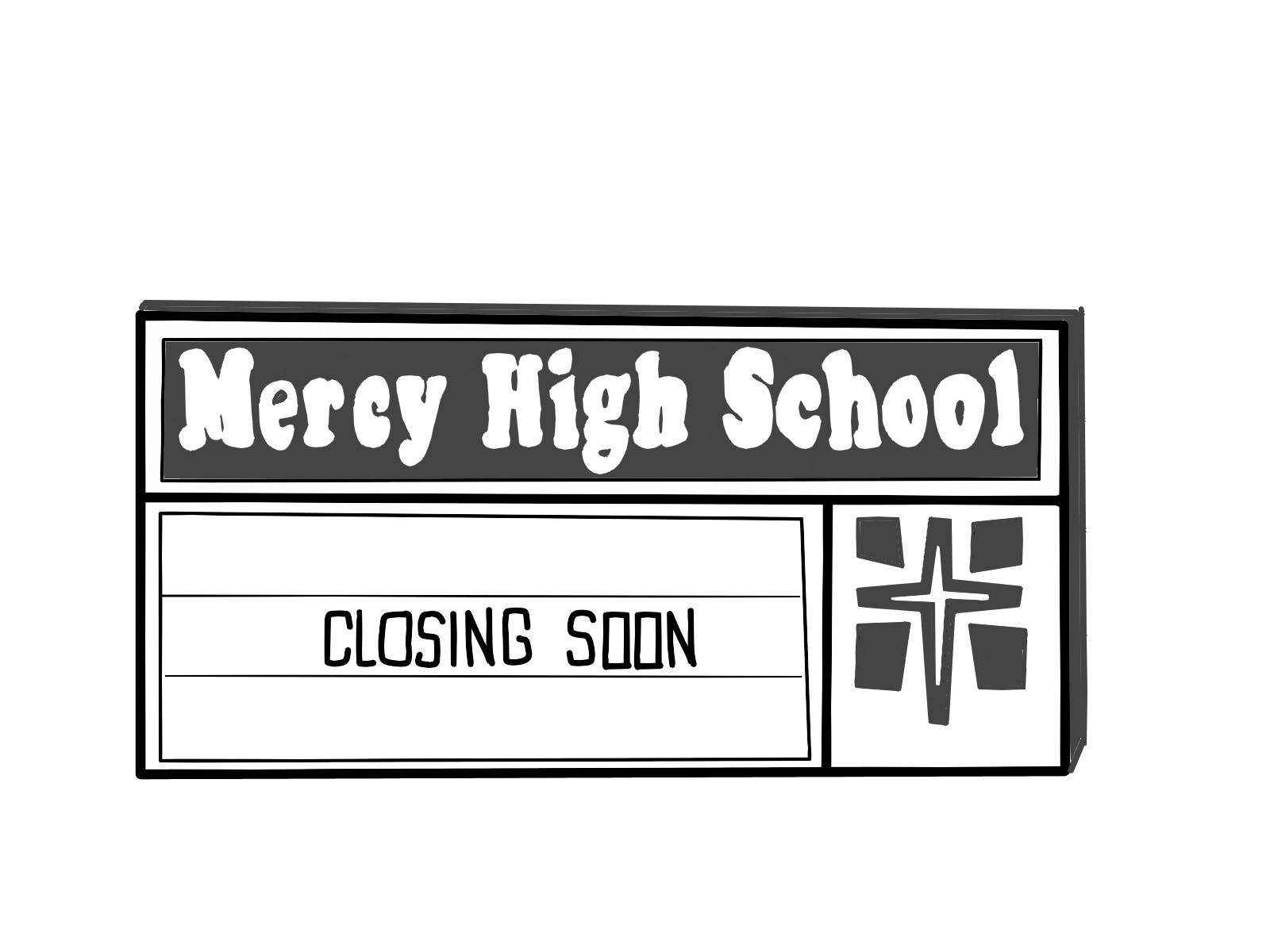
After losing a basketball match against Mercy High School San Francisco, Meghan Sowers, a junior at Mercy Burlingame, posted a photo with the caption, “lost the game but at least we are still a school.”
This came after Mercy San Francisco tweeted an announcement on Jan. 10: “With great sadness, we announce the planned closure of Mercy HS at the end of this school year. The Board [and] administration explored many strategies to bring stability. Regretfully these efforts were unsuccessful.” In short, Mercy does not have the funds to viably continue as a school because the rising operating costs were unable to compete with the declining rate of enrollment.

According to Steven Rissotto, the editor-in-chief of Archbishop Riordan’s newspaper, his school’s administration estimated that the shutdown has been three years in the making.
The closure raises the question of where students currently enrolled in Mercy San Francisco will attend school next year. Many are looking to private schools in the surrounding area, including their brother school, Archbishop Riordan, which has been traditionally single-sex, but will change its admissions policies to admit the displaced Mercy girls. Because this change is so monumental, one might expect widespread backlash at Riordan, but the critics are not the majority.
“We were sent surveys [concerning the decision to go co-ed] and most results were actually neutral or positive,” Risotto said.
However, Mercy Burlingame reacted less positively to accepting Mercy San Francisco girls.
“A lot of people are worried about how they’re all going to fit because our classrooms are really small and [so is] our parking lot,” Sowers said.
Regardless, Mercy San Francisco’s administration is working to ensure that all their students have a new home by the next school year. The decline of Mercy San Francisco brings to light the long standing debate of whether or not private schools are better equipped than public schools to raise the next generation. Comparing private and public schools is like comparing apples to oranges, but there are distinct differences.
“I think the biggest disadvantage [to public school] is the teacher to student ratio,” said AP Computer Science teacher Lisa Kossiver. “Sitting in class of 35 to one, the teacher doesn’t necessarily get to know every student the way they possibly could.”
However, in Kossiver’s view, public school has one significant advantage: on a big campus like Aragon, it is easier for students to find a group to mesh with, contributing to a heightened sense of community.
“Public school focuses a little bit more breadth of the real world,” Kossiver said.
The public school system may also better represent different socioeconomic groups that one would encounter after academia.
Although Sowers concurs that private school may not reflect the real world in some aspects, she still values the close community it provides, as it is one that she would not be able to find at a massive public school.
“I think it’s more personal, and I feel like I learned better by being in small group discussions,” Sowers said. “It’s definitely more of a sisterhood.”
For junior Janelle Soriano, the issue should not be between public and private schools.
“I think the bigger issue is access to money,” said Soriano. “You can be in a private school with an area that doesn’t have a lot of access to money.”
Unlike many independent K-12 schools who charge college-grade tuition, religious schools have been conscious to keep tuition low to attract a wider breadth of people.
According to Forbes, “Catholic schools are, on average, the least expensive private schools in the nation.” Thus, by centering the argument as a public versus private issue, more important factors like the resources of individual schools are cast aside.
By Soriano’s argument, Aragon, which is situated in a relatively affluent neighborhood, should not be compared to Fresno High School, just as Mercy San Francisco should not be compared to Crystal Springs Uplands School.
“The distinction between a good school and a bad one has a lot to do with the teachers,” Sowers said.
One may claim that this line of thinking favors public schools. According to the Atlantic, the base average salaries for teachers are $50,000 in public schools, but less than $36,000 for private schools. This may incentivise more qualified teachers to apply for public jobs and keep their positions for longer, thus increasing the quality of education.
On the other side of the token, private schools may attract teachers who value the smaller class sizes or care deeply about the school’s particular denomination. As one might expect, the quality of education varies by individual basis.
Because every student is unique, the question of public versus private should be posed as a blanket statement. One is not inherently better than the other, and they cater to different needs. The quality of education one receives is affected by numerous factors that cannot simply be attributed to whether a school is public or private. However, as with many other aspects of life, the rich receive the greater benefit.




